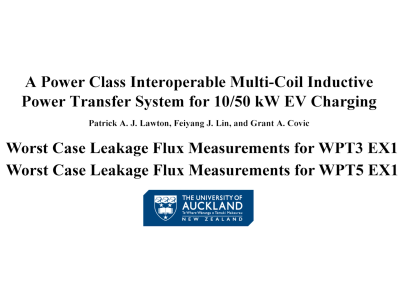
There are conductive charging and wireless power transfer (WPT) for electric vehicles (EVs), both of which are required for future charging piles and are usually separately designed and installed. However, two independent solutions increase the total cost, weight, and size of the charging pile. To address this issue, this paper proposes a conductive and wireless power transfer (CWPT) system based on resonant inductor-integrated transformers. Two optimized modulation methods for the multi-inverter are proposed to reduce the switching power losses.
- Categories:


